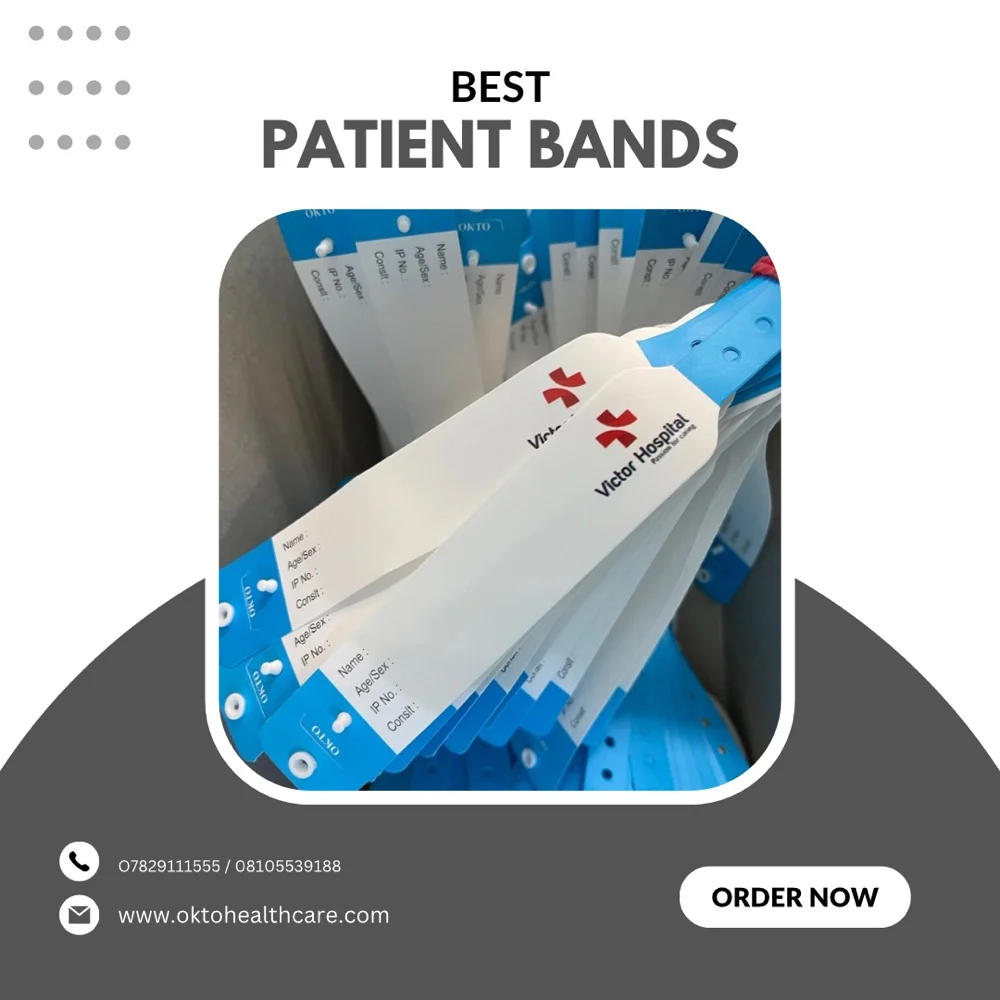The Significance of Using a Patient Identification Band for Every Patient
The Significance of Using a Patient Identification Band for Every Patient
Blog Article
Enhancing Safety: The Value of Person Identification Bands in Health Care
In the world of health care, the efficiency of individual identification bands can not be overstated, as they serve as a fundamental guard versus misidentification and subsequent mistakes. As we check out the multifaceted function of these bands, it ends up being evident that their relevance prolongs beyond mere recognition, raising questions concerning best techniques and future advancements in individual safety.
Overview of Individual Identification Bands
Client recognition bands play an important duty in making certain the safety and accuracy of person treatment in health care setups. These bands, commonly endured the wrist or ankle, function as a critical tool for validating individual identification, thereby reducing the risk of mistakes in therapy, medication administration, and other health care procedures. Made from resilient materials, patient recognition bands typically consist of vital details such as the person's name, day of birth, clinical document number, and barcodes or QR codes for scanning.
The implementation of individual recognition bands is essential in various medical care atmospheres, consisting of medical facilities, outpatient facilities, and long-lasting treatment organizations. They contribute to a methodical technique in client monitoring, allowing health care professionals to quickly and accurately determine patients, specifically in high-pressure scenarios where speedy decision-making is essential.
In addition, the use of these bands is aligned with governing standards targeted at improving person security - Patient Identification Band. By ensuring that each client's info is conveniently proven and conveniently available, health care suppliers can keep a high criterion of treatment, reduce the occurrence of unfavorable occasions, and foster a society of safety within healthcare establishments
Advantages of Accurate Recognition
Exact recognition is basic to improving patient safety and care top quality in healthcare setups. It acts as the first line of protection against errors that might cause damaging patient end results. By ensuring that each client is properly identified via trustworthy means, such as person recognition bands, medical care carriers can considerably lessen the risk of misidentification, which can lead to unacceptable treatments, medication errors, and also surgical mix-ups.
Furthermore, exact patient identification helps with efficient interaction among health care teams. When all personnel members can regularly recognize people, they can share critical details much more successfully, causing far better control of treatment. This is specifically vital in emergency situation circumstances where timely treatments are important.
In addition, exact identification supports compliance with governing standards, therefore decreasing the danger of lawful effects for medical care centers. It cultivates count on in between individuals and medical care companies, as people feel a lot more protected knowing that their identities are being safeguarded.

Typical Difficulties Faced
Making certain effective individual identification in medical care setups offers a variety of difficulties that can jeopardize security and care top quality. Clients might get here in a state of confusion or distress, making precise identification difficult.
An additional challenge is the dependence on human consider recognition procedures. Healthcare experts may accidentally misinterpret or forget recognition protocols, particularly in high-stress environments such as emergency departments. This can cause mistakes, including the management of wrong treatments or drugs.
Technological problems likewise present challenges. Digital health document (EHR) systems are developed to enhance patient recognition, system failures or customer mistakes visit the site can interrupt the procedure. In addition, the physical style of patient ID bands can cause readability concerns, particularly in cases where bands are damaged or obscured.
Last but not least, irregular training among staff regarding identification protocols can result in spaces in understanding and technique. Resolving check that these challenges is crucial for improving individual safety and security and guaranteeing that recognition bands offer their desired function efficiently.
Best Practices for Application
To effectively apply person identification bands in health care settings, companies must take on a diverse technique that prioritizes standardization, technology, and training assimilation. Standardization includes establishing clear procedures for the design, application, and use of recognition bands throughout all departments. This ensures uniformity and decreases the risk of errors linked to variances in band kinds or classifying methods.


Training is essential for all healthcare team to guarantee they understand the relevance of exact client recognition, just how to appropriately read and apply identification bands, and the treatments to adhere to in case of disparities. Routine workshops and correspondence course can strengthen this expertise and advertise a society of safety.
Technology assimilation plays a critical duty in improving the performance of patient identification bands. Using barcode scanning or RFID innovation can enhance the recognition procedure, enabling real-time confirmation of client identifications. Additionally, digital health document systems ought to be set up to include informs for inequalities in between the recognition band and person data.
Future Trends in Client Safety And Security
As medical care remains to advance, the focus on individual security is likely to increase, driven by innovations in modern technology and a better understanding of systemic dangers. Arising trends show a shift towards even more integrated systems that utilize information analytics, expert system, and artificial intelligence to enhance individual identification procedures. These technologies can help determine possible safety and security problems prior to they escalate, consequently minimizing mistakes connected with misidentification.
Furthermore, the application of blockchain technology may change how patient information is firmly shared amongst doctor, making sure that identification bands are consistently accurate you can try these out and updated. This will certainly not only boost patient security but likewise promote seamless communication across multidisciplinary groups.

In addition, the expanding emphasis on personalized medicine is expected to influence person safety procedures. By incorporating market and hereditary details right into identification systems, health care experts can tailor treatments better, reducing the threats of damaging responses as a result of misidentification.
Verdict
In final thought, individual identification bands serve as a vital part in enhancing security within healthcare atmospheres. Ultimately, the ongoing emphasis on durable recognition methods will add to improved individual end results and overall safety and security in medical care settings.
In the realm of healthcare, the efficacy of individual recognition bands can not be overstated, as they serve as a fundamental secure versus misidentification and subsequent mistakes.Client identification bands play a critical function in making certain the security and precision of client care in healthcare settings. Made from durable materials, person recognition bands usually include crucial information such as the individual's name, day of birth, clinical record number, and barcodes or QR codes for scanning.
By ensuring that each person is appropriately determined via trusted means, such as client recognition bands, medical care providers can considerably decrease the danger of misidentification, which can lead to unsuitable treatments, medication mistakes, and even medical mix-ups.
In conclusion, patient recognition bands serve as an important element in boosting safety and security within healthcare settings. Patient Identification Band.
Report this page